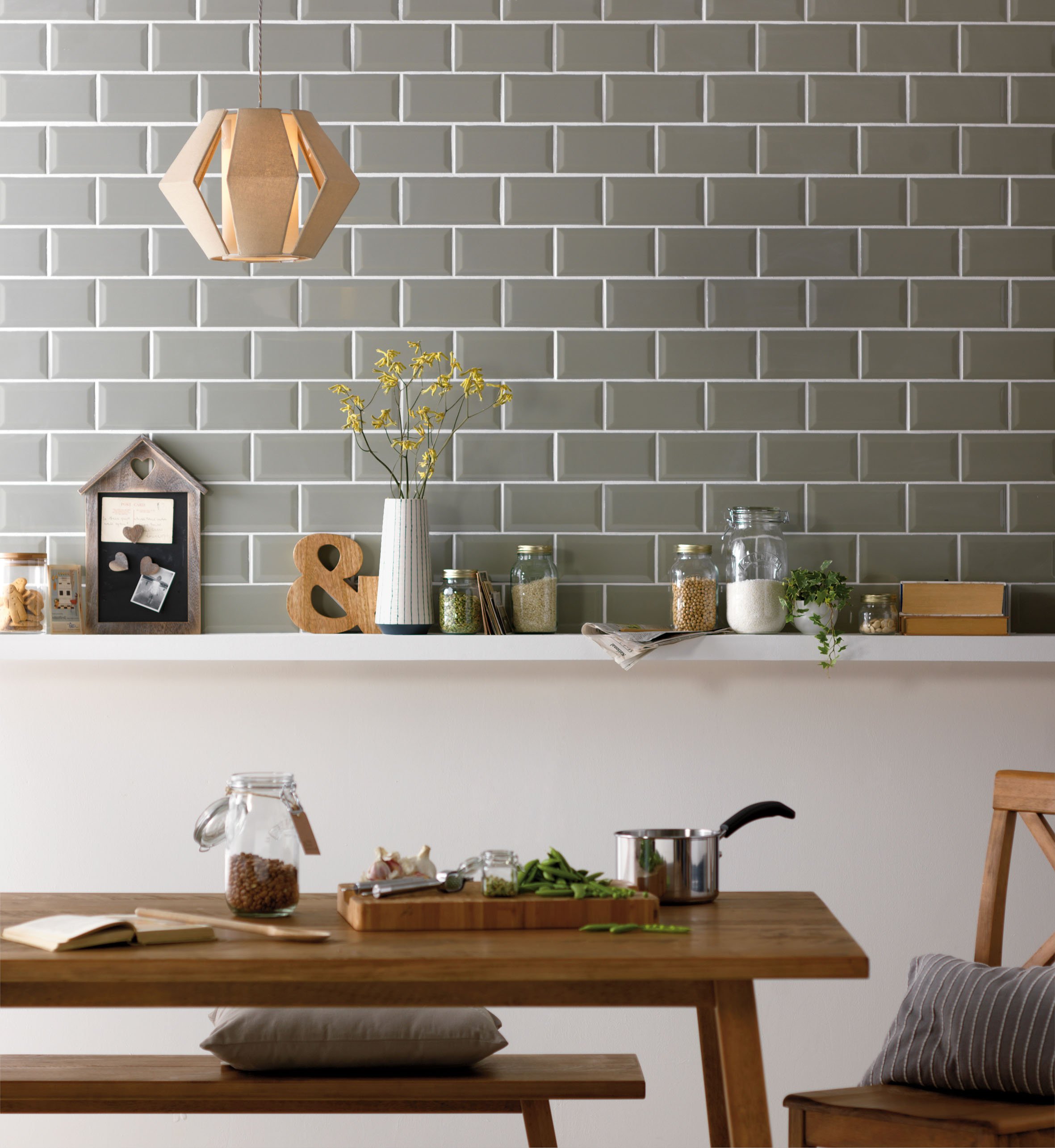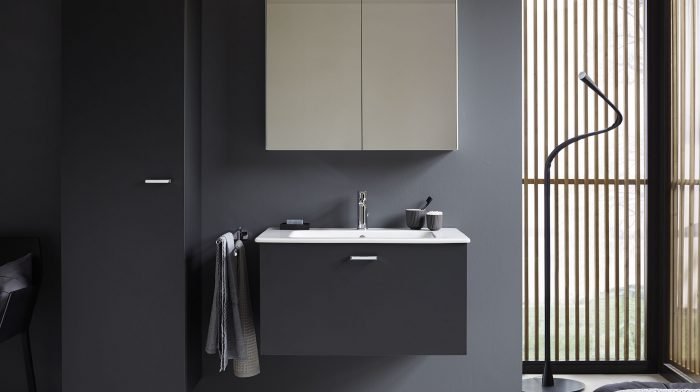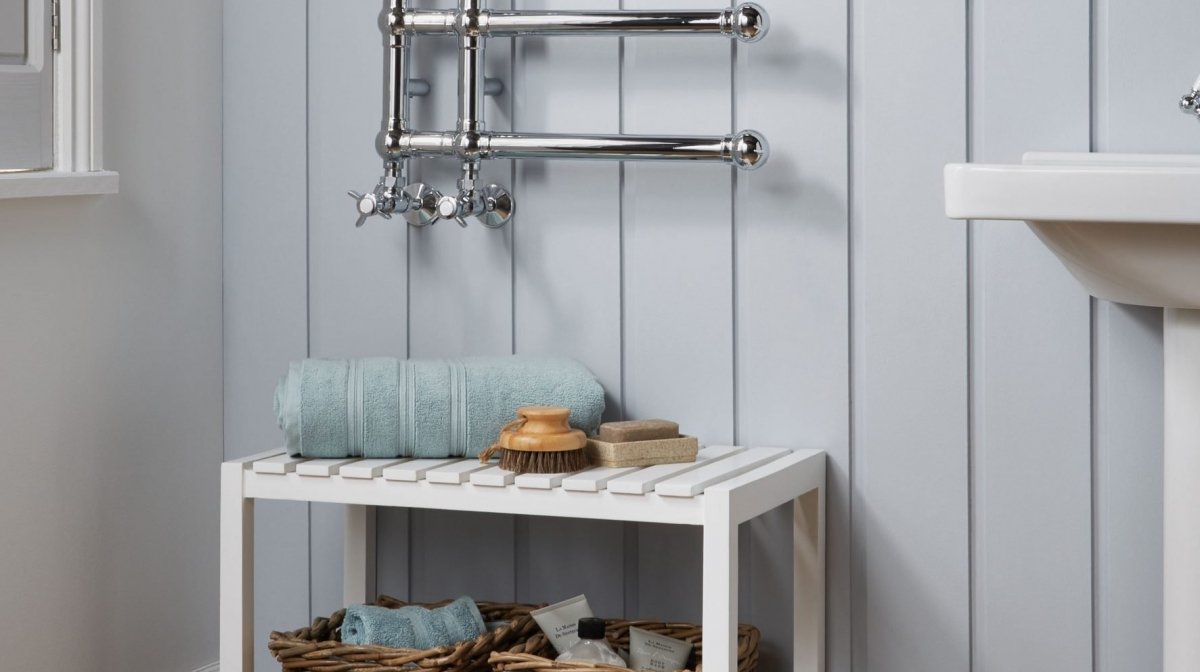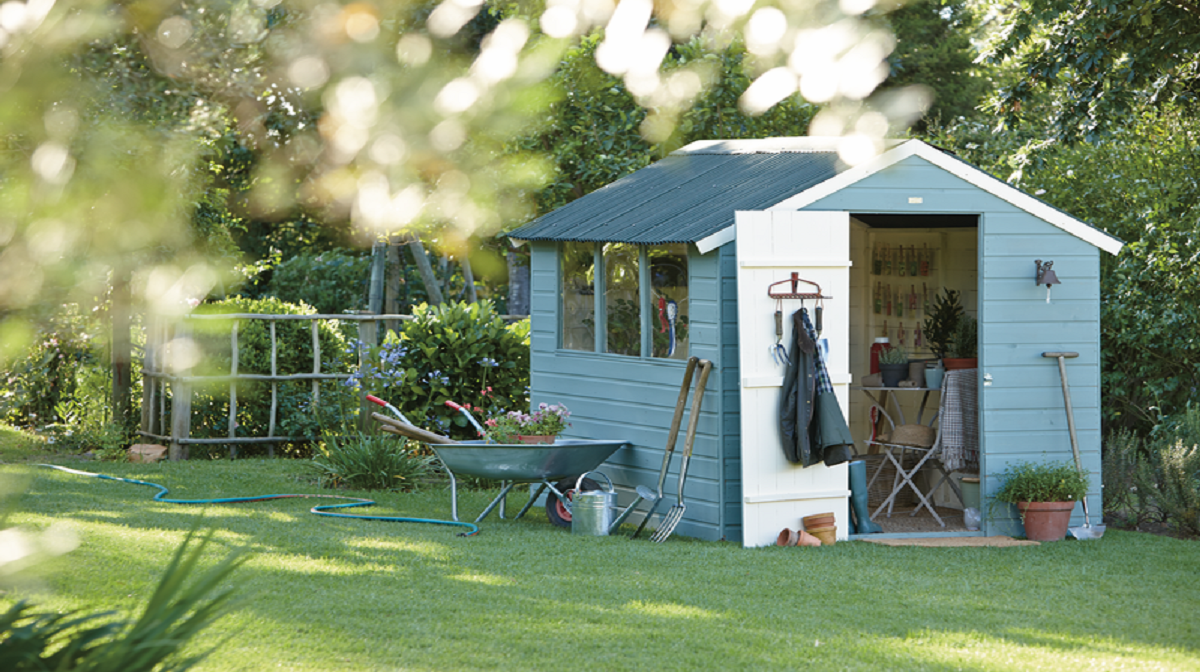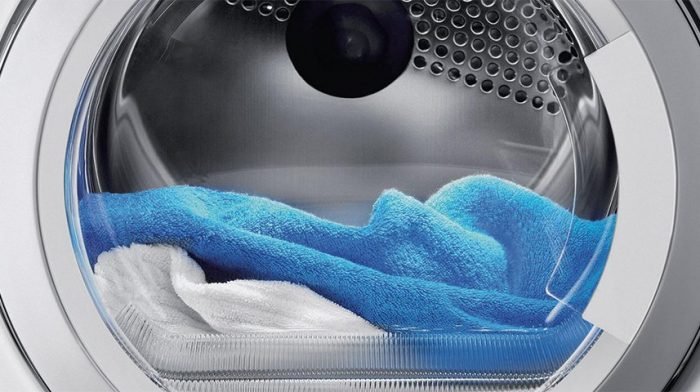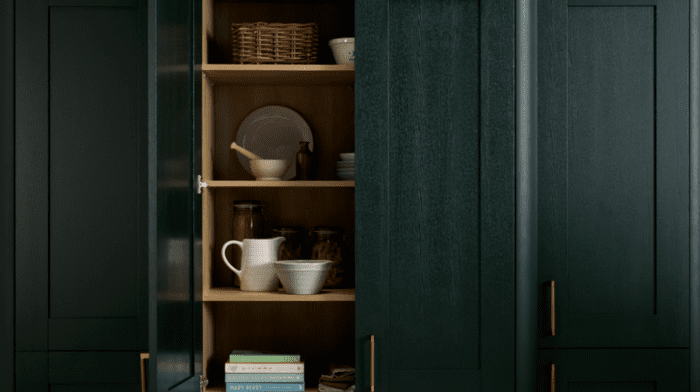Let Homebase help you transform your home with this handy guide to picking the best tiles for your next redecorating project. Versatile, easy to clean and extremely durable tiles are a great way to stamp your individual style on your kitchen and bathroom. With so many materials, shapes, patterns, colours and styles available, you can use tiles in any room to help achieve your perfect interior design scheme
Which tiles are right for you?
Ceramic tiles
Ceramic tiles are the most popular choice in tiling. A key benefit of ceramic tiles is that they don’t need to be sealed after they’ve been fixed in place. They are available in a huge range of designs, colours and effects, as well as a variety of sizes. They are a cost-effective tile choice as they are easy to maintain and clean. Ceramic tiles are only suitable for indoor use and are recommended for light traffic areas, such as cloakrooms and bathrooms.
Porcelain Tiles
Made in a similar way to ceramic tiles, porcelain tiles are more durable and hard-wearing and are therefore suitable for more heavy traffic areas, such as kitchens and living rooms. Some porcelain tiles are frost proof and can be used outside, always check the packaging for details. Porcelain tiles are suitable for walls, but as they are heavier than ceramic tiles, you need to be sure that the wall structure can withstand the weight. Porcelain can be finished either glazed, unglazed or polished.
Glass
Glass that’s been cut, coloured and hand-finished can be fashioned into a wide range of styles, shapes, textures and colours to make an exciting range of wall tiles suitable for use in living spaces, kitchens and bathrooms. Glass tiles naturally reflect light, which can give the illusion of depth. Glass tiles require specialist cutters, as they can be difficult to cut.
You can also get glass mosaic tiles, which you can mix and match with other tiles to create truly unique and personalised designs.
Travertine
Made from natural stone, travertine tiles are packed with character, and no two tiles are ever exactly the same.
Travertine tiles come in two finishes; natural tumbled or polished. Tumbled travertine has a more open, sponge-like texture, whilst polished travertine tiles are filled and buffed to a sleek, shiny finish. Travertine can be used inside and outdoors but these tiles do need to be sealed both before and after grouting.
Marble Tiles
A natural option that’s perfect for creating individual and characterful bathroom designs, marble tiles come polished with a high-shine finish. As with travertine, every tile is unique. Used throughout the ages to provide a feeling of cleanliness, opulence and luxury, marble is a timeless classic that will never go out of fashion.
Mosaics
Mosaic tiles can be made of any material and come in sheets containing many smaller tiles, so you can mix and match them to create your own design.
What are the basics for buying tiles?
What size tiles do I need?
The size of tiles you need will depend on the size of the room, the size of the area being tiled and your personal preferences. Large tiles in small rooms can make the space look smaller while using small tiles on large areas can be impractical from a fitting point of view.
Tiles come in a number of standard sizes. These include:
- Wall tiles: from 10cm up to and including 60cm
- Floor tiles: from 30cm up to and including 60cm
Rectangular, sheet and mosaic tiles are all available in a range of different sizes.
When buying tiles, always check the pack coverage, but remember that this figure doesn’t allow for breakages, pattern matching or mistakes. It is always a good idea to budget for these occurrences as it might end up costing more in the long run if compensations aren’t made.
How many tiles do I need?
When calculating how many tiles you need, measure the area and add an extra 10% (or a little more if you’re doing a patterned border).
This way, you’re allowing for breakages, cutting, waste and pattern matching. If you’re unsure, buy more tiles than you need as unopened boxes of tiles can always be returned to store for a refund or exchange, providing you return them within the standard return period.
Do tiles need to be sealed?
Ceramics and glass don’t need to be sealed after fixing, but some natural stone products do. Natural stone sealer seals the tiles’ natural porous surface to stop it staining and prevent water damage, making it especially important in areas like the kitchen and bathroom. We recommend you check our product pages or brochures for details on which tiles require sealing prior to installation.
How often should tiles be resealed?
If you go for natural tiles, then you’ll need to seal them regularly to ensure they stay protected. Resealing should be done every six months, and you can also find specialist polishes and cleaners to help keen natural material tiles looking their best.
How are wall tiles laid?
When laying wall tiles, it’s a good idea to start from the centre of the largest wall or surface and work your way from there. You should apply tile adhesive to both the wall and the back of the tile, scouring with grooves that run in opposite directions to increase grip when applied.
Each tile should be pushed firmly into place using spacers to create a small, even gap between them. These will be filled with grout after fitting. You should work slowly and methodically when tiling a wall and cut any end tiles to size to create a smooth and even finish.
You also need to consider any special requirements of the area you intend to tile, like working around fittings such as pipes, especially when tiling bathroom or kitchen walls.
Aftercare?
Even after the project is completed, it is important to maintain your tiles so that they remain in excellent condition. Always check the packaging for specific maintenance advice, as not all maintenance methods are suitable for every tile type, and some can even damage certain tiles.
Be sure to clean all spillages on floor tiles to reduce the risk of injury, and use absorbent mats in areas around baths and showers where possible. Mats should also be used at any external doorways to protect the tiles from damage caused by debris transfer from outside.
What is grout?
Grout is the cement-like substance used to fill in the gaps between tiles. It is usually different from the adhesive that is used to actually secure tiles in place.
There are many different grouts and adhesives for tiles. You can buy combined grout and adhesive, either as a powder to mix yourself or ready-made. Grout is visible in between the joins of individual tiles and comes in a range of colours to complement or contrast with your design.
What safety advice should I follow?
Always wear the appropriate equipment when tiling. Eye protection, dust masks and gloves should be worn when cutting tiles to size and you should always use an appropriate electric saw to ensure a professional finish. When laying tiles, gloves should be worn and you should cover surrounding fittings, furniture and flooring with dust sheets to prevent grout, adhesive or other materials from staining surfaces.
What finish is right for me?
Tiles normally come finished as either a matt or gloss finish.
